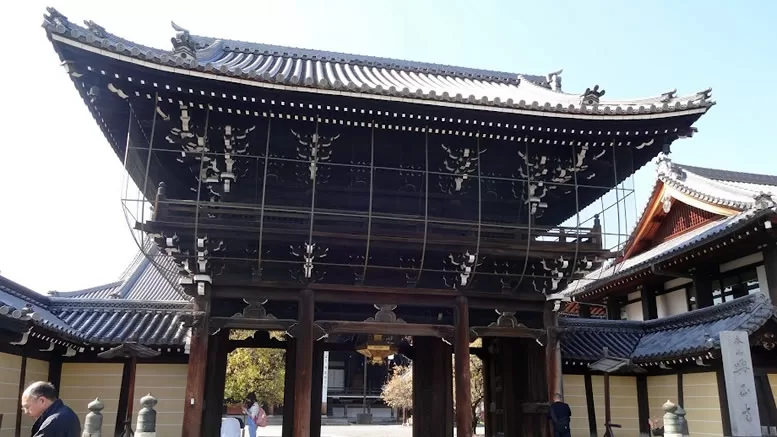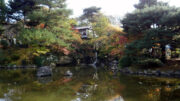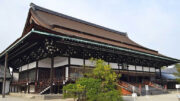Nishi Hongan-ji Temple, located in the heart of Kyoto, is one of the most significant temples of the Jodo Shinshu sect of Buddhism. As a UNESCO World Heritage site, it offers visitors a glimpse into Japan’s religious and cultural history. This grand temple, founded in 1602, is a must-visit destination for those interested in traditional Japanese architecture, spiritual practices, and historical significance.

Nishi Hongan-ji Temple was established as the head temple of the Hongan-ji branch of Jodo Shinshu Buddhism, which was founded by the revered monk Shinran. The temple played a crucial role in the spread of Buddhism throughout Japan during the Edo period. Its rich history and profound influence on Japanese religious life make it an important cultural landmark.
Highlights
The temple complex is renowned for its magnificent architecture, which exemplifies traditional Japanese design. Key structures include:
Goeido Hall: The largest building in the temple complex, dedicated to Shinran, the founder of Jodo Shinshu Buddhism. This grand hall is an architectural masterpiece, featuring intricate woodwork and a serene atmosphere perfect for contemplation.
Amidado Hall: Dedicated to Amida Buddha, this hall is another highlight of the temple. The hall’s serene ambiance and beautiful decorations make it a popular spot for visitors seeking spiritual solace.
Karamon Gate: An exquisite gate adorned with intricate carvings and gold leaf, representing the pinnacle of Momoyama-period design. This gate is a designated National Treasure of Japan.
Hiunkaku Pavilion: A stunning three-story pavilion used for cultural events and ceremonies, surrounded by a picturesque garden.
Cultural and Religious Significance
Nishi Hongan-ji Temple is not only a place of worship but also a center for cultural activities. The temple hosts various events throughout the year, including traditional Buddhist ceremonies, cultural performances, and educational programs. These activities provide visitors with a deeper understanding of Jodo Shinshu Buddhism and Japanese culture.
Visitor Experience
A visit to Nishi Hongan-ji Temple offers a peaceful and reflective experience. The serene temple grounds, adorned with lush gardens and tranquil ponds, provide a perfect setting for meditation and relaxation. Visitors can explore the beautifully preserved buildings, participate in guided tours, and attend Buddhist services to gain insight into the temple’s spiritual practices.
With its rich history, stunning architecture, and serene atmosphere, Nishi Hongan-ji Temple is a must-visit destination for anyone exploring Kyoto. Whether you’re interested in Japanese culture, religious history, or simply looking for a peaceful retreat, this temple offers a unique and enriching experience.
Nearby Attractions
While visiting Nishi Hongan-ji Temple, consider exploring these nearby attractions to enhance your Kyoto experience:
Higashi Honganji Temple: Just a few blocks east of Nishi Hongan-ji, this temple serves as the head temple of the Otani faction of Jodo Shinshu Buddhism. Known for its impressive architecture and serene atmosphere, it’s a significant cultural site worth visiting.
Kyoto Aquarium: Located in nearby Umekoji Park, the Kyoto Aquarium offers a fascinating look at marine life with exhibits ranging from local river ecosystems to ocean habitats.
Kyoto Railway Museum: Also in Umekoji Park, this museum is a must-visit for train enthusiasts, featuring an extensive collection of trains and interactive exhibits about the history of railways in Japan.
Access Information
Nishi Hongan-ji Temple is conveniently located in Kyoto, making it easily accessible by public transportation:
By Train: The temple is a 10-minute walk from Kyoto Station, the city’s main transportation hub. From Kyoto Station, follow signs for the Karasuma Exit, then head west along Shiokoji Street.
By Bus: Several Kyoto City Bus lines stop near the temple. The closest bus stop is Nishihonganji-mae, both just a short walk from the temple entrance. Take the Kyoto City Bus From Kyoto Station, Line 9, 28 or 75 bound for Nishi Kamo Shako.
Official Website
https://www.hongwanji.kyoto/en/




